Sloth sanctuary and poisonous frogs
Poisonous frogs
Dawn is the best time to see wildlife and birds so we set our alarms for 5:30am, though we needn’t have – the noises of nature woke us anyway. The rain conveniently stopped just as the sun came up. We set about exploring the gardens with cameras, not sure what we’d find.
The paths were wet, and perfect for frogs. Beneath my feet hopped a black-and-green poison dart frog (although the green was perhaps a more resplendent turquoise). Bending down low to get a good photo I found myself staring another one in the face; it was chasing its mate, and they soon left the path and did what mating animals do behind a bush. These frogs were everywhere, kamikaze creatures that’d hop out in front of your feet.
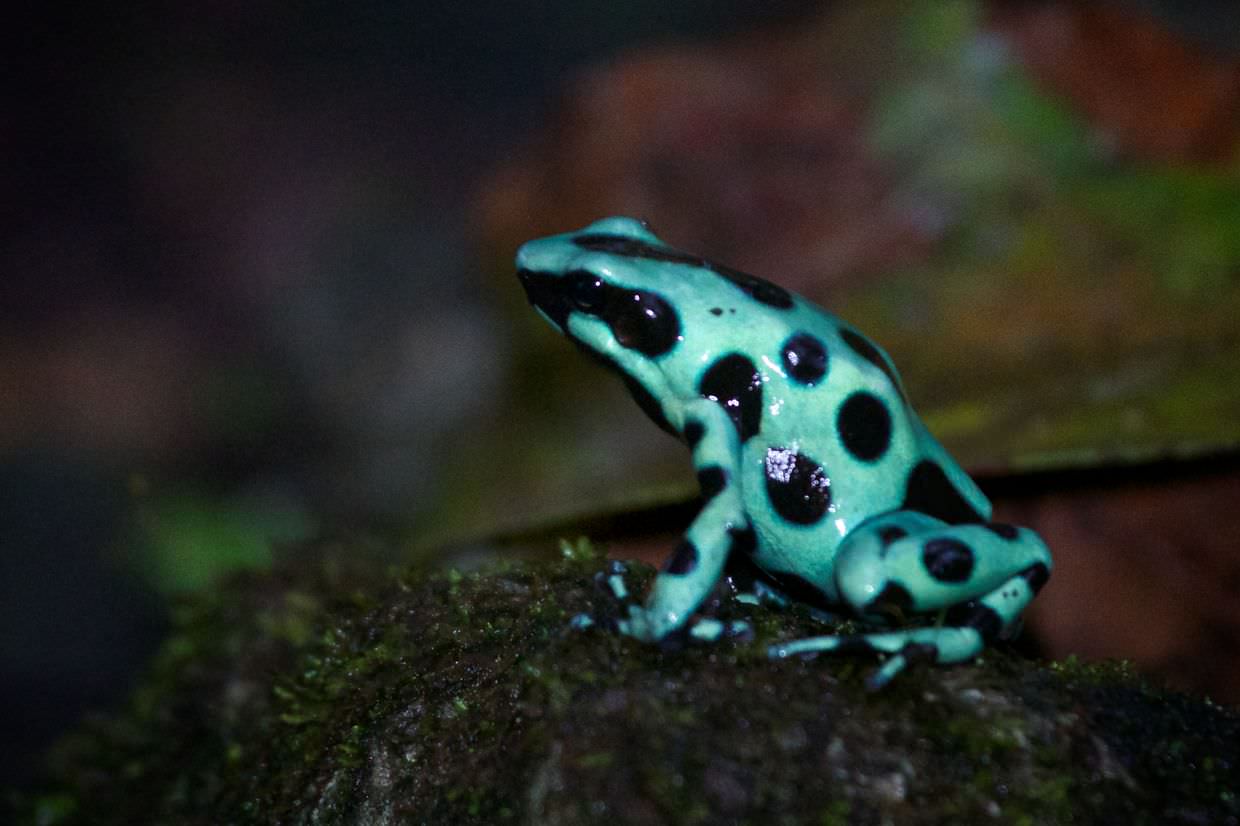
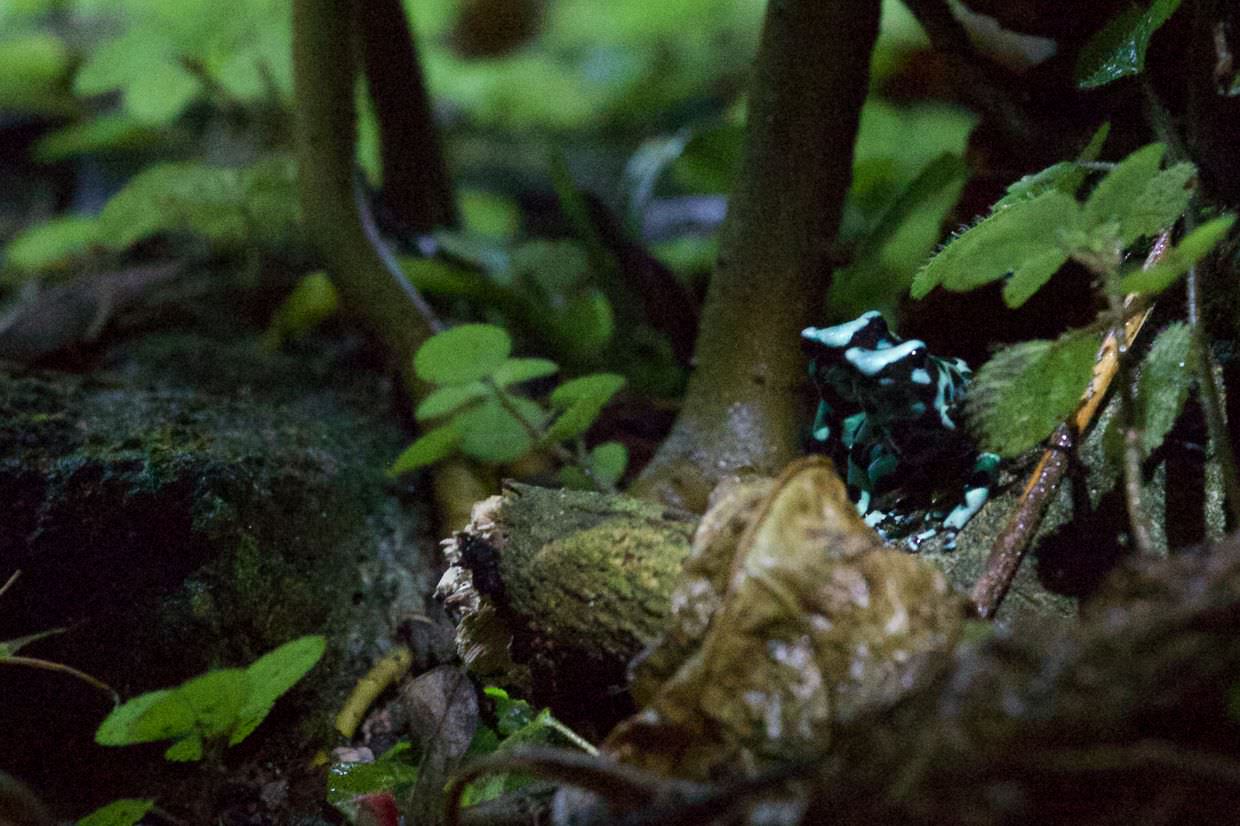
Towards the back of the hotel I found my first Agouti, a common rodent about the size of a cat, related to Guinea Pigs.
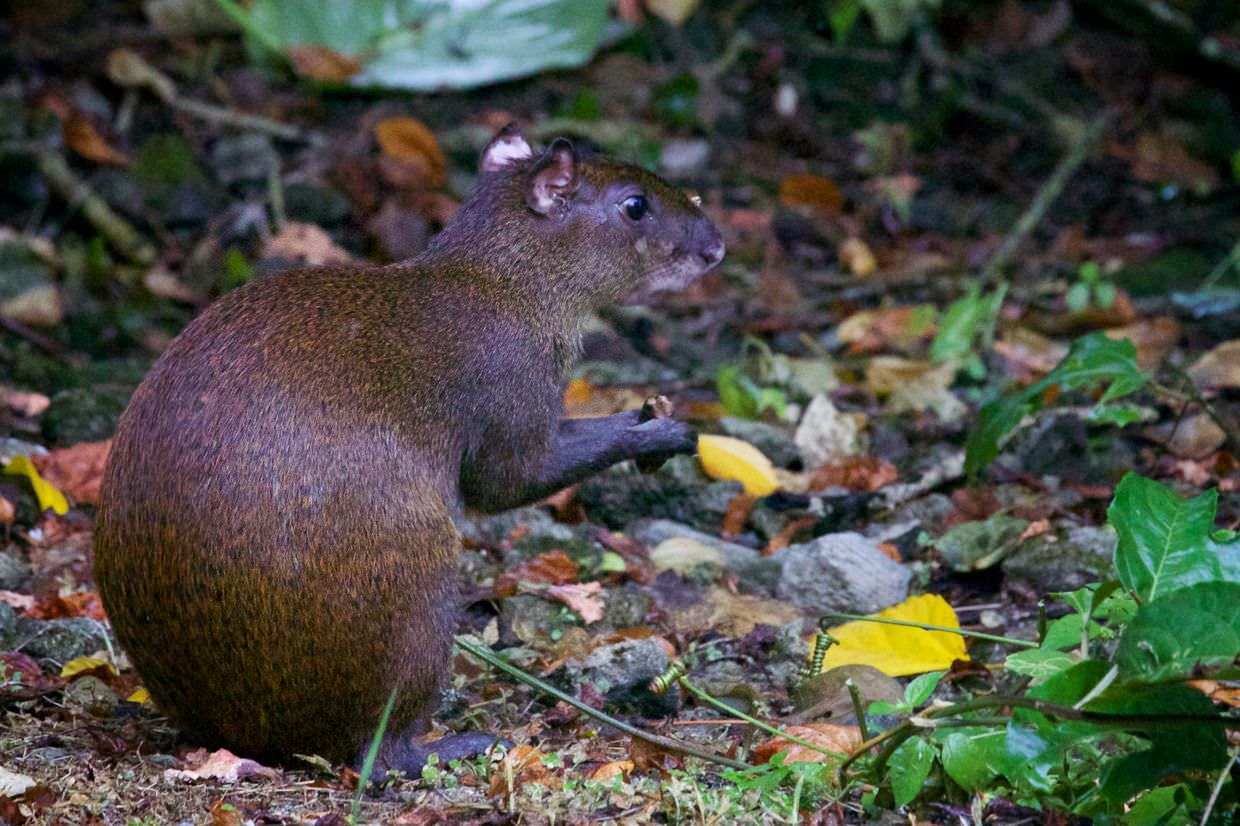
Gallo Pinto
Costa Ricans, or Ticos, have a diet that consists mostly of rice, beans and bananas. Breakfast is no exception, where the specialty is Gallo Pinto; it’s beans and rice, cooked with onions and peppers and a bit of coriander, served with fried or scrambled eggs and sometimes soured cream (it’s best with soured cream!). Fruit is served on the side (that’s where banana comes in).
We’d had some at Le Bergerac, and now again at Atlantida lodge. It’d be a staple breakfast option throughout the holiday, and since holidaying in Asia I’ve loved eating rice for breakfast. The portions here were especially big. (And when we tired of rice and beans their Canadian pancakes tasted great too).
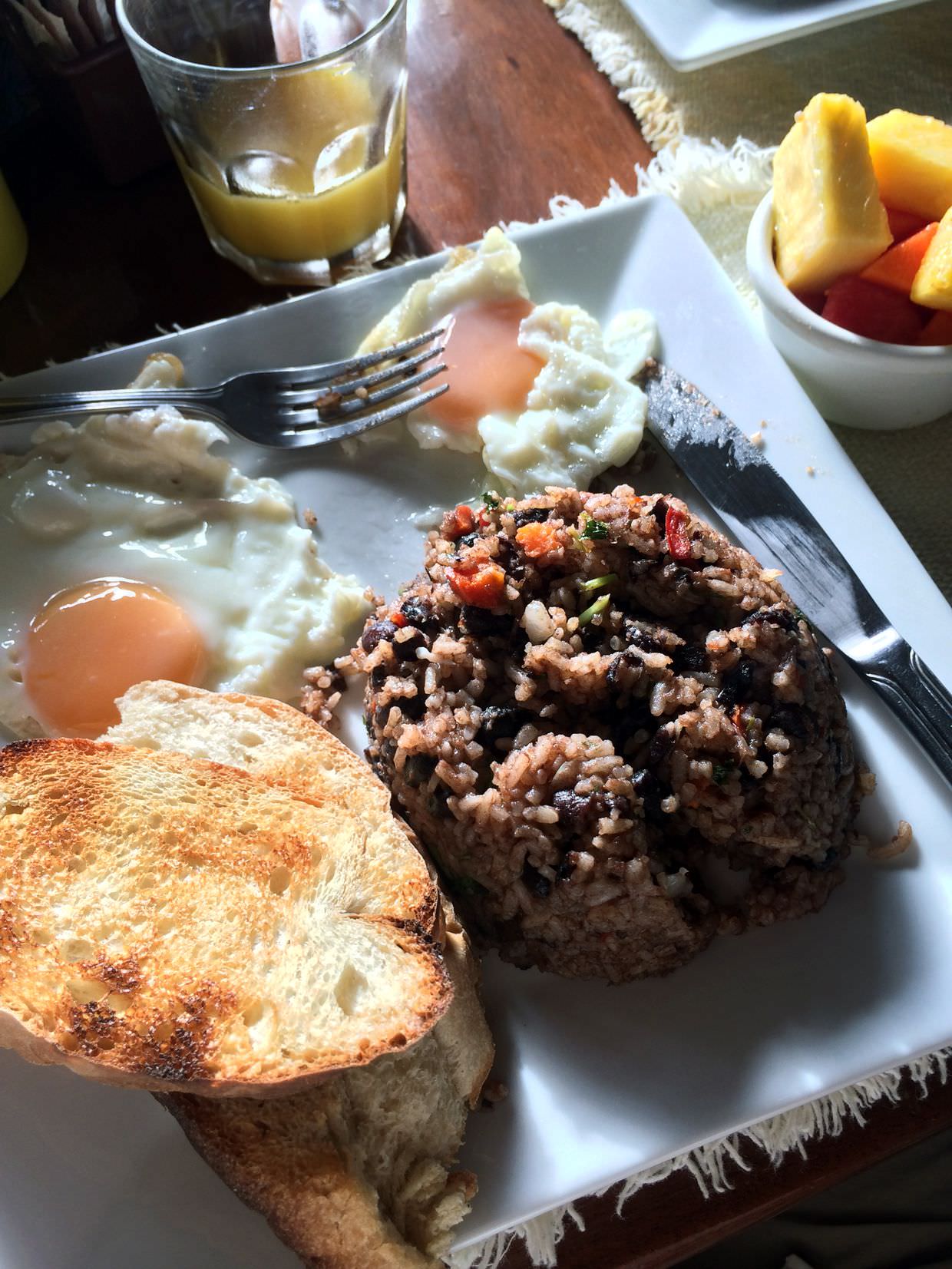
Sloth sanctuary
10km up the road from Cahuita lies the Sloth sanctuary, a reserve dedicated to the rescue, rehabilitation, release and research of sloths. We’d heard that the sanctuary’s sloths are most active in the mornings, during feeding, after which they mostly sleep; we took a rather pricey $20 taxi (in the most beat-up blinged-up football-fan’s taxi we’d ever seen) to get there for the first 8am tour.
Canoe tour
We paid for the 2-hour “Buttercup” tour, which begins with a serene canoe ride around the sanctuary’s waterways. On the water’s surface were orange and green petals from the blossoming trees overhead, in the low morning light they glowed magically. In a tree near the water’s edge we found a wild two-toed sloth, and shortly after a spectacled caiman resting on the bank. We also passed a group of Northern Jacana birds. Under a tree trunk we found a sleeping bat.
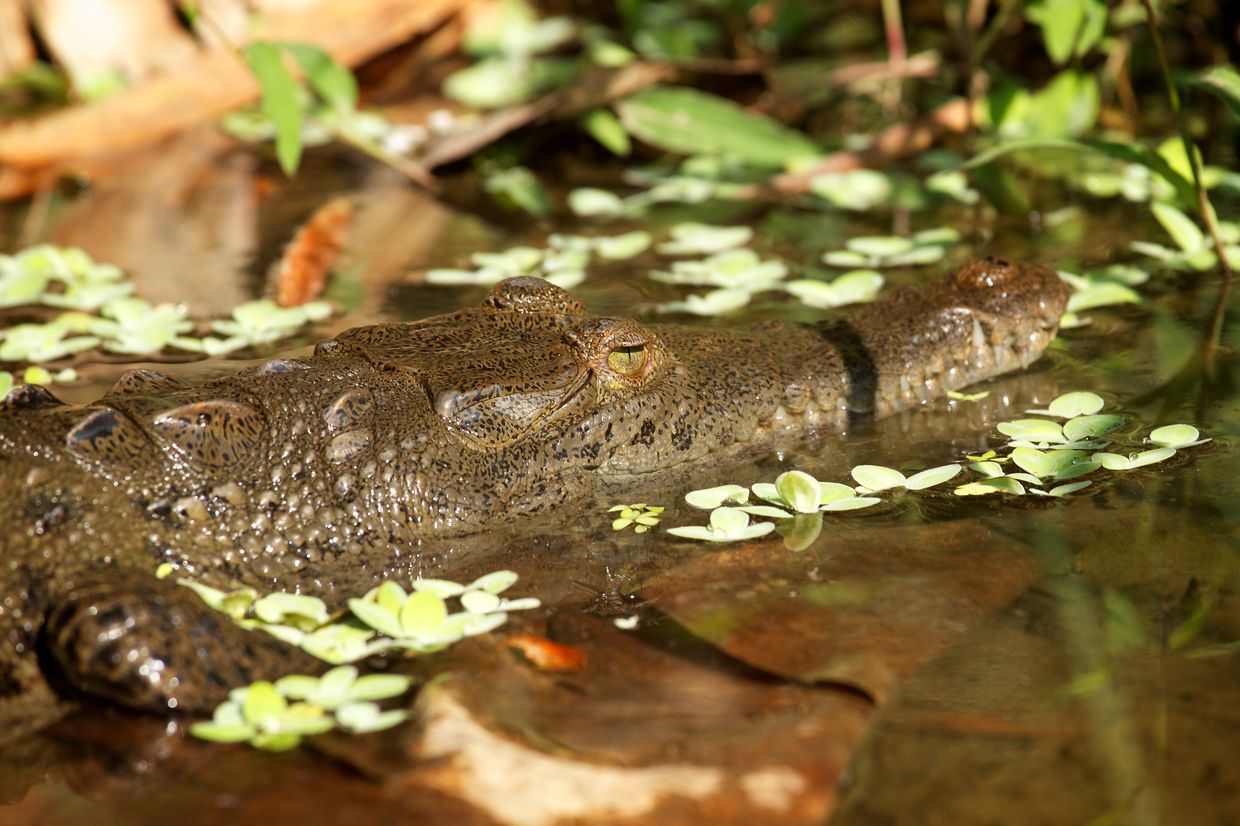
Costa Rica has a lizard known as the “Jesus Christ Lizard”, or Common Basilisk/Plumed Basilisk, it gets its name for its ability to run across the surface of water; fitting then that our first encounter was to see this brilliant green lizard sprint away from us over the water.
The sounds of a Montezuma Oropendola astounded us; the male mating call sounded like a peculiar laser sci-fi sound effect, its nest is a hanging ball of twigs, and with the way it hops and skips about the trees – as a friend noted, it’s a bird pulled straight out of a cartoon.
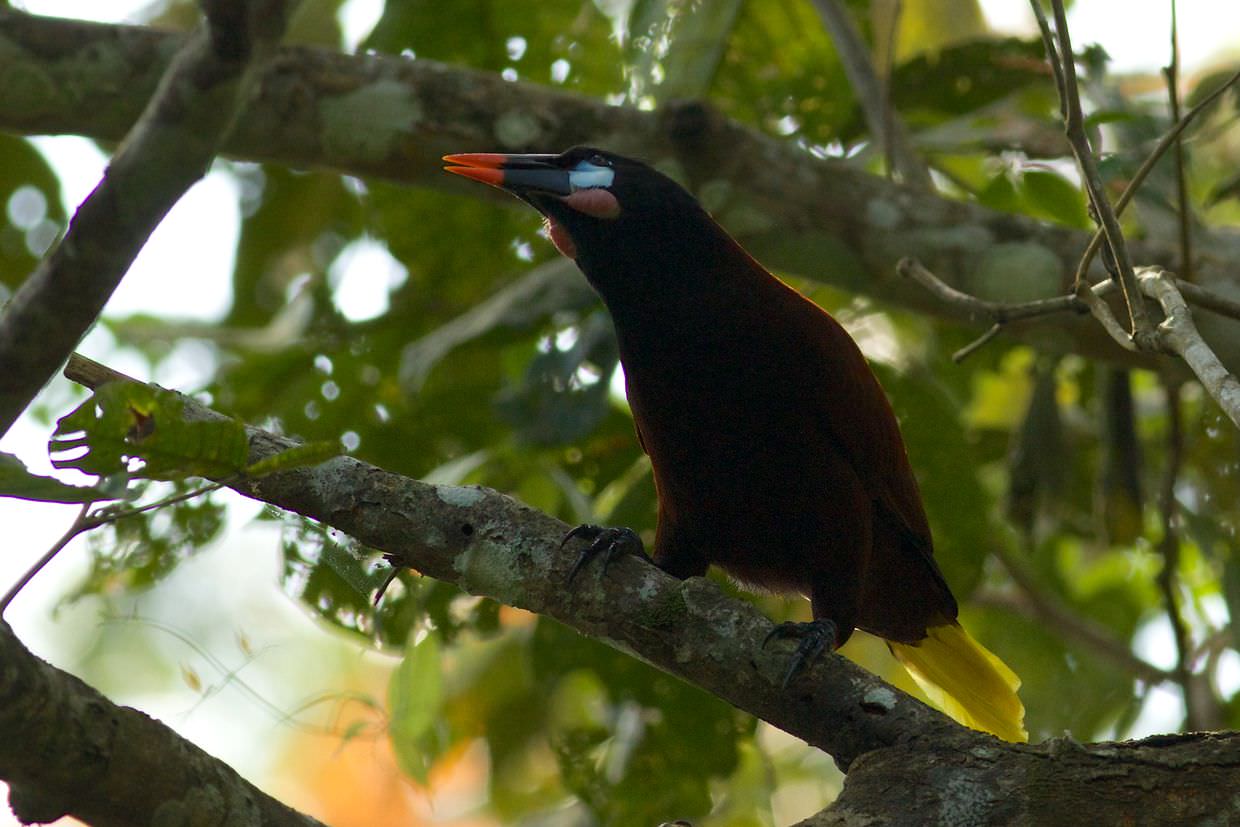
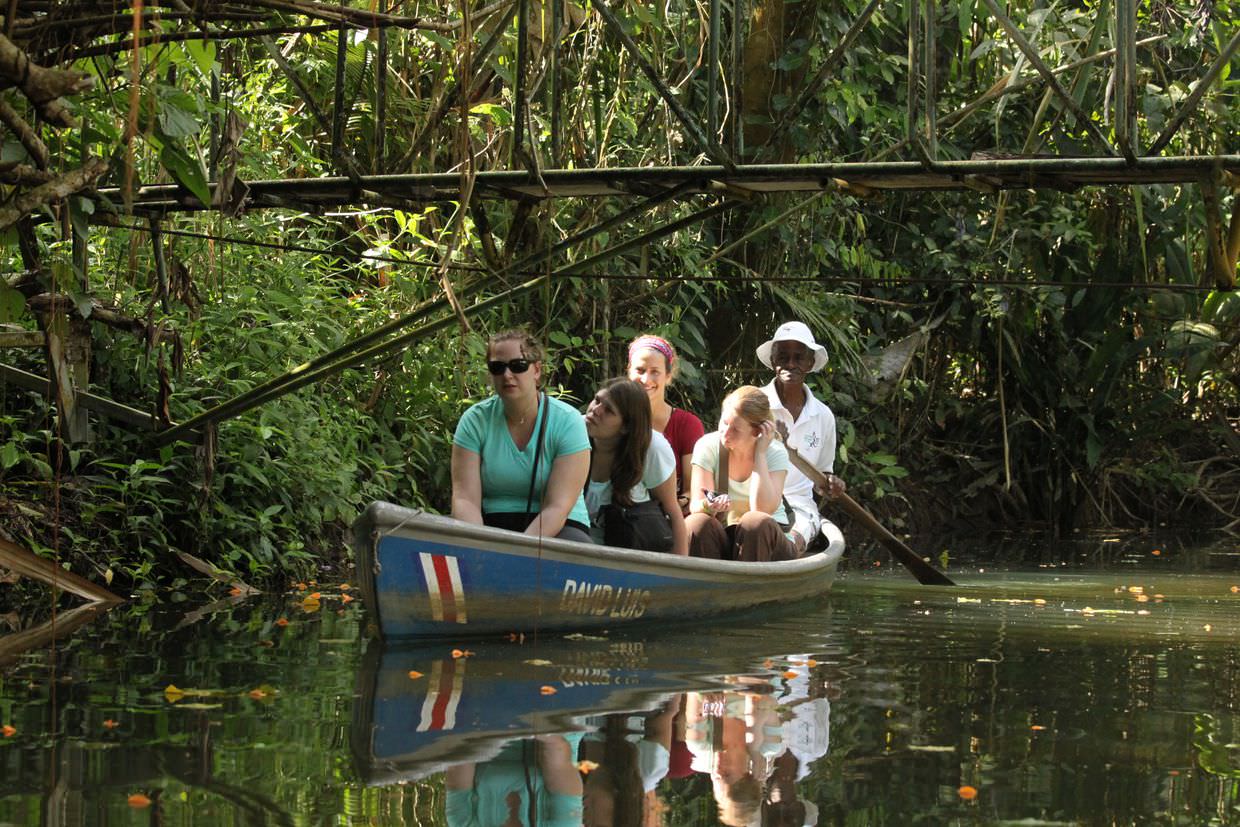
Sanctuary tour
After the boat trip we had our Sloth tuition, with our guide Marcus. He liked to say “guys” a lot, “guys guys guys” he’d say, trying to steal our group’s attention away from the adorable friendly sloths in the enclosures behind him.
There are two-toed and three-toed sloths in Costa Rica he explained, but really they should be named “two-fingered” and “three-fingered”, as both have feet with three toes. The sloths are very different from each other; two toed is white-haired, has canines, a snout, no tail and can eat fruit; three toed is smaller, lighter, is black and white with facial stripes, and only eats plant leaves – it moves slower too. Most importantly, they found their slow moving, herbivorous lives independently – convergent evolution. Despite the climate and the heat, the sloths are hairy to keep warm, because they move slowly they cannot generate much heat.
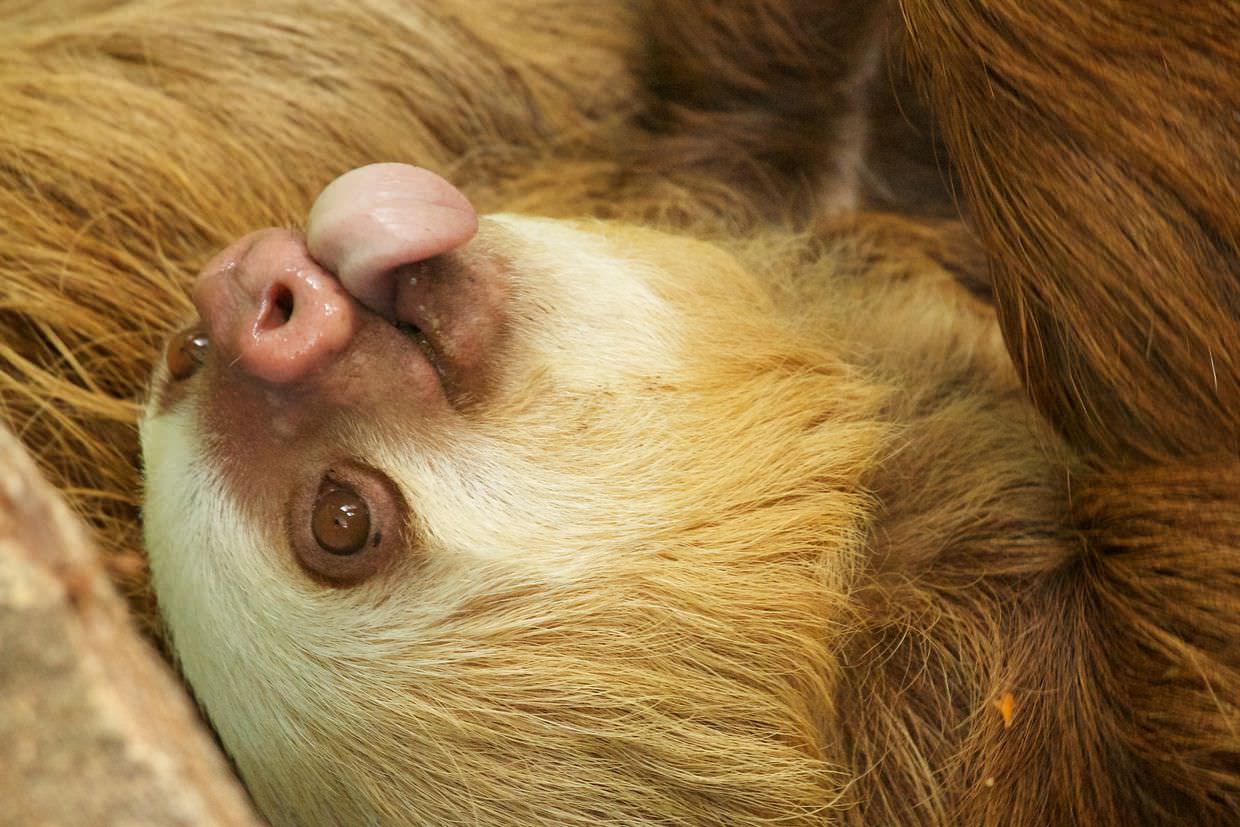
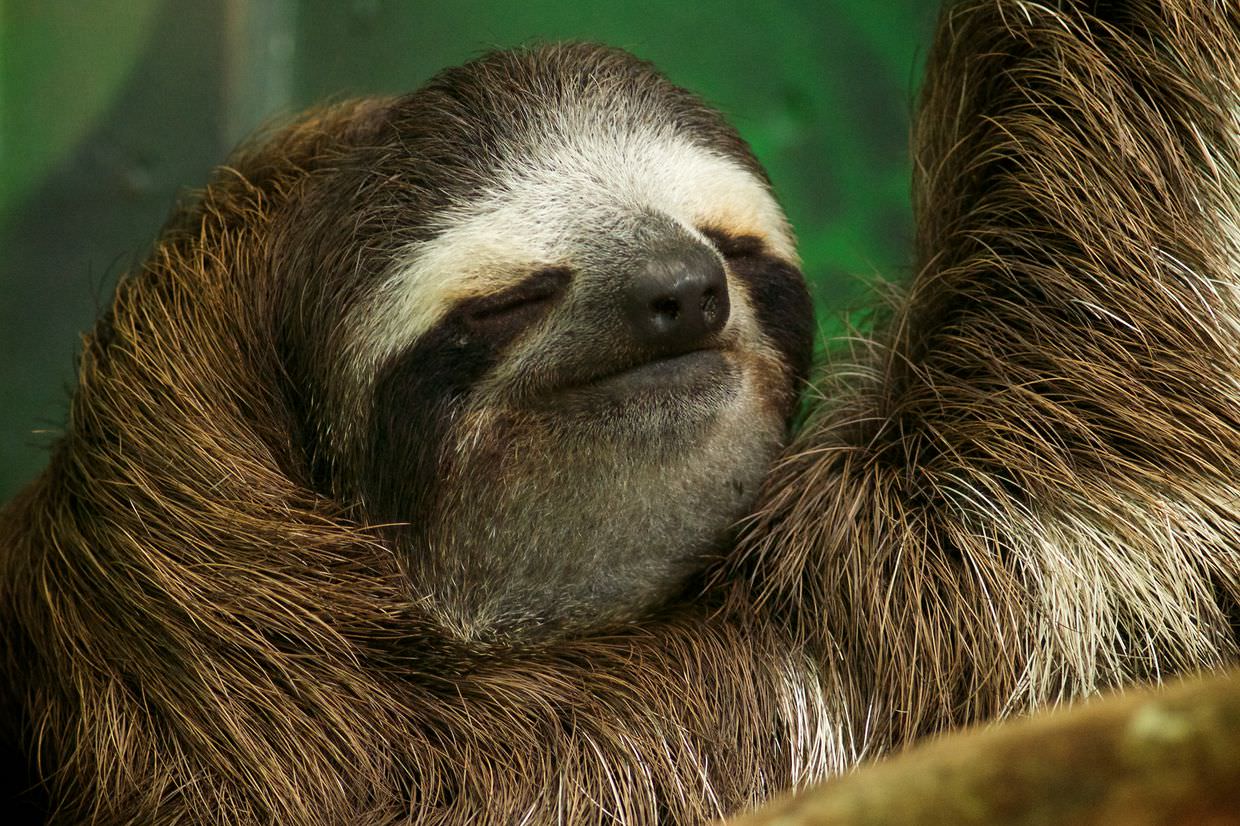
Many find their way to the sanctuary as rescues; one three-toed sloth named “Toyota”, electrocuted itself when trying to grab onto a power line, he survived 5 days before being rescued, his arm needed to be amputated and he’ll live out his life in care; he’s adorable. Others are in car accidents, have been attacked by dogs, or fall from trees.
We learnt about sloth behaviour too; they stay in the treetops, except for once a week when they come down for a toilet break; they dig out a hole and tidily bury their mess in the ground, before climbing back up. Food can take a month to digest, in their four stomachs. In the sanctuary sloths live happily together, in the wild they are solitary; if their partner or friend is taken away in the sanctuary they will become depressed, “imagine a depressed sloth” says our guide. Babies are born “ready to go”, with hair, claws and eyes, after up to a year of gestation; it’s only ever a single baby.
The tour ended with a look at the nursery, where the babies are looked after; they were all sleeping. Many young are brought in, rescued from the pet trade, or babies who have fallen and been abandoned by their mothers; our guide explained that the babies survive the fall, and the mother will come down to pick them up, but that when something is wrong, the baby will keep falling, and eventually the mother must give up. These babies, who haven’t had their one year of sloth tuition will never be able to leave the sanctuary; we can’t impersonate a sloth to teach a baby the behaviours it needs; other sloths don’t care for young that are not theirs, and it cannot learn by itself. They’ll live for up to 40 years so it’s a big commitment for the sanctuary.
While Samantha perused the gift shop I sat and watched Buttercup (the sanctuary’s first sloth and “pin-up”) move around her hanging seat, looking around, smiling nonchalantly, such a lovely creature. She’s “in season”, and would occasionally let out a high pitched squeal, her mating call.

Cahuita town
We got the bus back to Cahuita, comfortable, quick and less than a dollar each. From the bus station we had our first opportunity to explore Cahuita itself. It’s rickety, many homes are wooden, on stilts and have holes where you’d normally find windows; it’s one of Costa Rica’s poorer places. It’s not much more than a few criss-crossing streets, a school, a bank, the national park entrance, a beach and a variety of hostels and eateries (or sodas as they’re called here). Reggae music is pumped into the air, and it has a certain Caribbean charm.
Miss Edith’s
At the far end of town is Miss Edith’s, a family run restaurant. They were still setting up when we arrived because they’d just got back from church.
I ordered a rather simple Caribbean fried rice with vegetable; the ever adventurous Samantha ordered the most expensive thing on the menu – lobster; it was both beautiful and delicious – though she left alone the scotch bonnet on the top. The same was true with our drinks; simple mango smoothie for me, Sam had the “Frog Water”, or “Agua de Sapo”, a classic Costa Rican drink comprised of ginger, lime and unrefined sugar cane (panela).
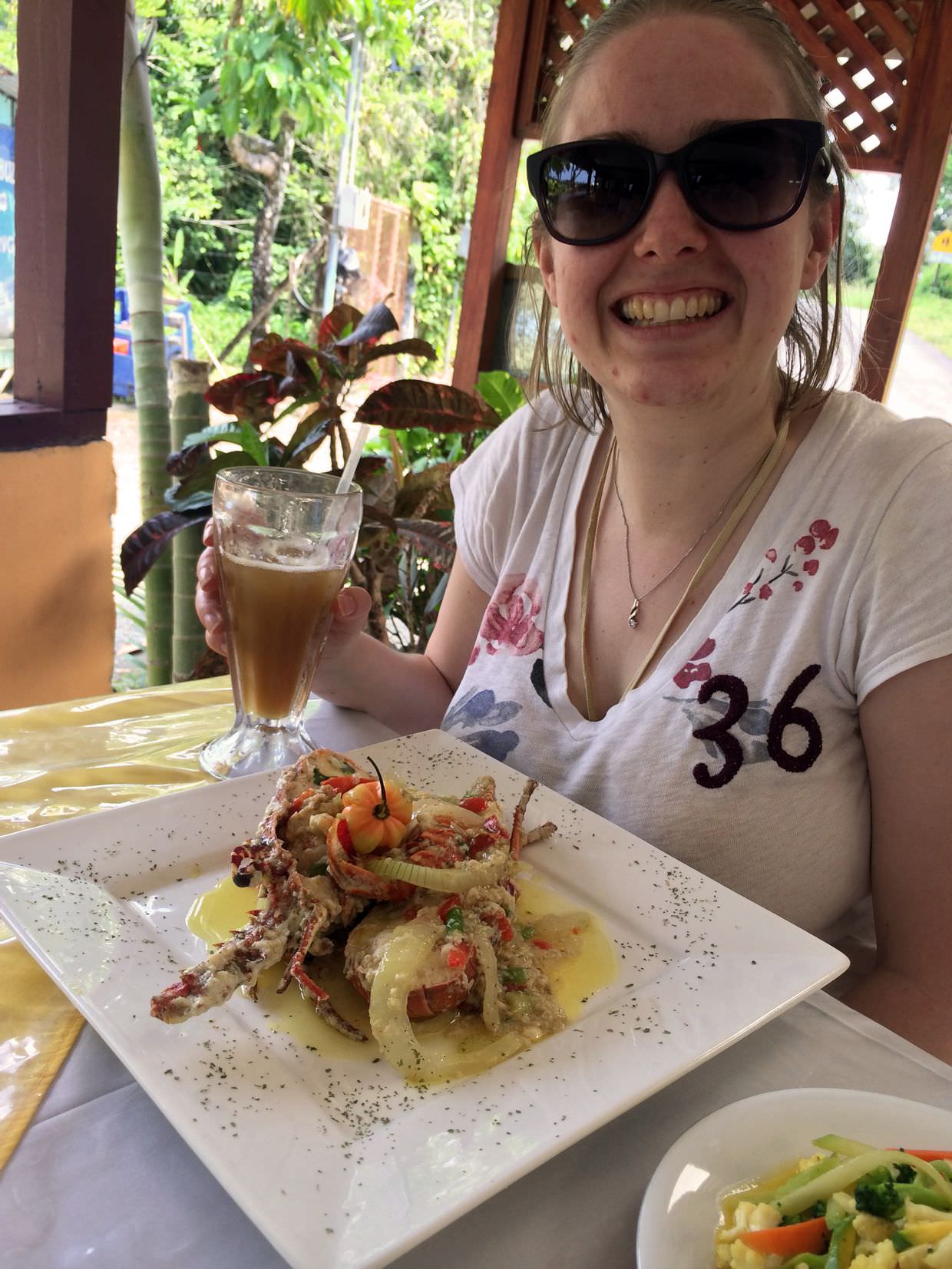
Reggae bar
That afternoon was spent by the pool, and sleeping, we still needed to recover from jet lag. For dinner we headed North along the coast to the “Reggae bar”, where loud music played, where we drunk Costa Rican Pilsen lager and ate burgers, well I did, Sam had something else (shrimps and rice) – but she wished she’d had the burger, it was massive.
Tree frogs
A Swedish guest at the hotel, who we met on our Interbus transfer, showed us photos of red-eyed tree frogs she’d seen near the hotel pool. Slightly inebriated we set about finding these beautiful creatures.
The hotel has set up a little pond by the swimming pool, full of plants these frogs love, and with conveniently positioned lights to help you find them (though only for a short time, as the frogs don’t like the light). It didn’t take us long to spot the first one, we found three, but there were surely many more hiding just out of sight – I made the same mistake as in the morning; I tried to get close to one for a photo, and found another a little too close.

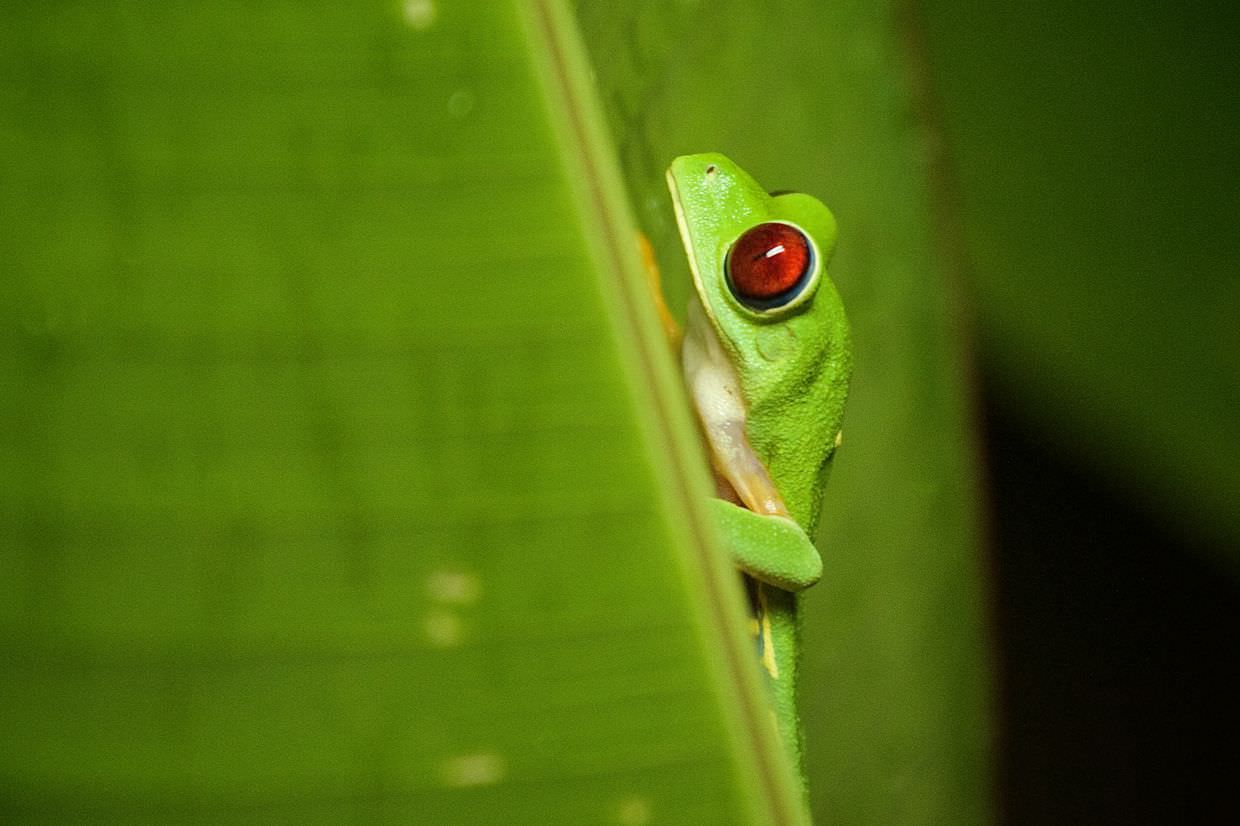
These tree frogs are bigger than the dart ones, and along the sides of their slender green bodies are blue and yellow stripes. We stared at their bulbous red eyes until we felt sleepy, and trotted off to bed.
Our first day over, we’d already seen coloured frogs, a wild sloth, discovered a crazy bird and seen a Caiman. Today was a good day.